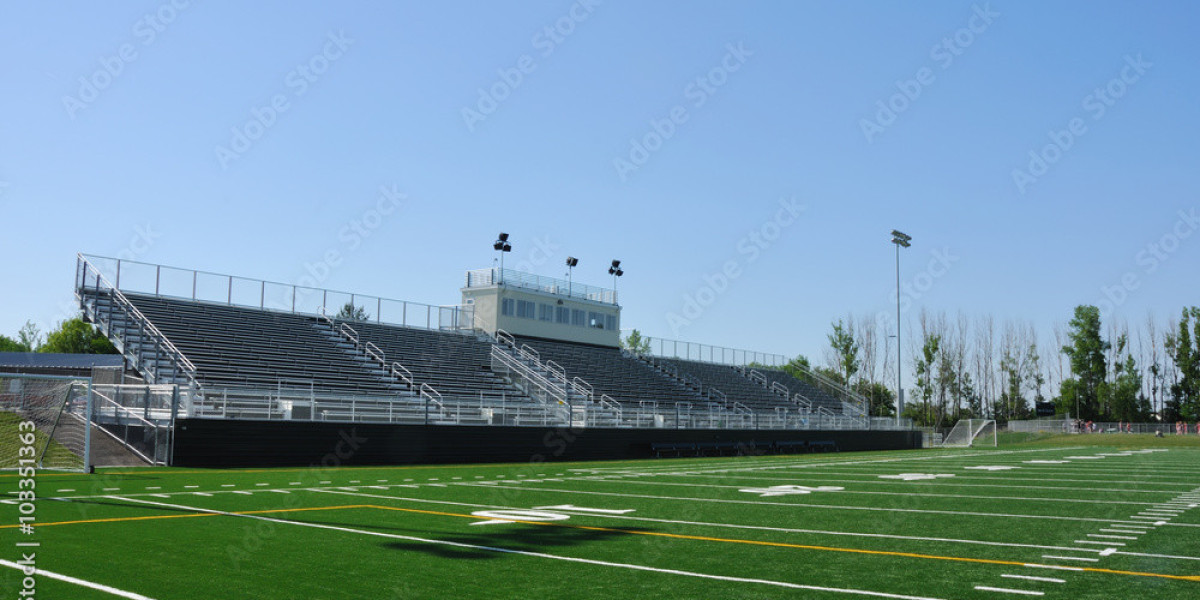When organizing an event, whether it's a sporting match, outdoor concert, or graduation ceremony, one critical component is ensuring proper seating. grandstands and bleachers play an essential role in accommodating large crowds while providing comfort, safety, and visibility. However, choosing the right type of grandstands or bleachers can be challenging, as several factors need to be considered. This comprehensive guide will walk you through the critical elements to consider when selecting the proper grandstands and bleachers for your event.
Understand the Purpose and Venue
The first step in selecting the proper grandstands and bleachers is understanding the purpose of your event and the characteristics of your venue. Different types of events may require specific seating configurations, and the size, location, and layout of your venue will influence the type of seating you need.
Outdoor vs. Indoor Venues
When selecting grandstands or bleachers, it is important to consider outdoor and indoor venues. Outdoor venues often require more durable and weather-resistant seating options, especially in areas prone to rain, extreme heat, or cold temperatures. Aluminum used bleachers, for example, are commonly used for outdoor events because they resist rust and can withstand harsh weather conditions.
For indoor venues, seating may prioritize comfort and style over durability. Indoor grandstands often come with more cushioned seating options and feature aesthetic designs that blend with the venue's interior. Ventilation and airflow in indoor spaces may also be a factor in choosing the appropriate seating materials and layout.
Event Type and Audience Size
The type of event also dictates the kind of grandstands and bleachers you'll need. A sports event, such as a high school football game, may require seating that offers high visibility and is designed for long periods of sitting. Meanwhile, a graduation ceremony or community event may focus more on comfort, with broader seating spaces.
Additionally, knowing the estimated audience size is critical. For smaller crowds, temporary or portable bleachers might suffice. More significant events, on the other hand, may require permanent grandstands that can handle heavy foot traffic and crowd movement.
Types of Grandstands and Bleachers
Grandstands and bleachers come in various configurations and materials, each with its benefits and drawbacks. Understanding the types available can help narrow down your options.
Permanent Grandstands
Permanent grandstands are built directly into a venue and are ideal for locations that host recurring events. They provide stable, long-lasting seating solutions and can be customized to suit specific needs.
- Benefits:
- Customizable to fit the venue
- High seating capacity
- Often more comfortable than portable options
- Durable for long-term use
- Drawbacks:
- Higher upfront costs
- Requires regular maintenance
- Limited flexibility (fixed seating)
Permanent grandstands are suitable for stadiums, arenas, and schools that host frequent sports or large-scale events.
Temporary and Portable Bleachers
Portable bleachers offer flexibility and ease of setup, making them perfect for events where seating needs may change or the venue is temporary. They come in different sizes, materials, and configurations and can be easily moved or reassembled.
- Benefits:
- Flexibility for various event types
- Lower cost compared to permanent structures
- Easy to install and move
- Drawbacks:
- It may have a lower seating capacity
- Less durable over time
- It may require storage space when not in use
Temporary bleachers are ideal for community events, traveling carnivals, or school sports fields that need versatile seating options.
Telescopic Bleachers
Telescopic bleachers, also known as retractable seating, are commonly used in multi-purpose indoor venues. These bleachers can be expanded or retracted as needed, offering an efficient space-saving solution.
- Benefits:
- Maximizes space efficiency
- Can be easily retracted when not in use
- Suitable for indoor sports facilities or gyms
- Drawbacks:
- Requires a smooth, stable surface for installation
- Limited to specific venues (typically indoor)
These bleachers are perfect for gyms, school auditoriums, and used stadium seats for sale that require quick transitions between events.
Material Considerations
The materials used to construct grandstands and bleachers significantly affect their durability, cost, and comfort. Common materials include aluminum, steel, and wood, each offering unique advantages.
Aluminum Bleachers
Aluminum is the most popular material for outdoor bleachers due to its durability, lightweight nature, and corrosion resistance. Aluminum bleachers are also relatively easy to maintain and can withstand various weather conditions.
- Benefits:
- Lightweight and easy to install
- Resistant to rust and corrosion
- Long-lasting with minimal maintenance
- Drawbacks:
- Not as comfortable as padded seating
- May become hot or cold depending on the weather
Aluminum bleachers are ideal for outdoor stadiums, parks, and schools hosting sports events.
Steel Grandstands
Steel offers greater strength and durability than aluminum, making it a popular choice for more extensive, permanent grandstands. Steel grandstands can support larger structures and higher seating capacities, making them ideal for professional sports venues.
- Benefits:
- Extremely durable and strong
- High seating capacity
- Suitable for large-scale events
- Drawbacks:
- Heavy and difficult to transport
- Prone to rust if not properly maintained
Steel grandstands are common in stadiums, arenas, and other venues that require permanent seating structures.
Wooden Bleachers
Wood offers a classic, rustic feel that is often used in older stadiums or community venues. However, wood requires more maintenance and is less durable than metal alternatives.
- Benefits:
- Aesthetic appeal
- Comfortable for shorter periods
- Affordable for small-scale events
- Drawbacks:
- Susceptible to rot, warping, and splintering
- Requires regular upkeep
- Not suitable for large or permanent installations
Wooden bleachers are typically found in community parks, historical venues, or schools with older infrastructure.
- Capacity and Safety
When choosing grandstands and bleachers, ensuring the safety and comfort of your audience should be a top priority. Several factors influence safety and capacity, including the number of rows, the spacing between seats, and the structure's weight limits.
Seating Capacity
The seating capacity of your grandstands or bleachers should be sufficient to comfortably accommodate your audience. Overcrowding can lead to safety hazards, so ensure that your seating structure can support the expected number of attendees.
Consider the following:
- How many people will be attending your event?
- How long will they be seated?
- Is the seating design comfortable for long durations?
Safety Features
Grandstands and bleachers must meet specific safety regulations, including railings, non-slip surfaces, and adequate stairways or access points. Key safety features to look for include:
- Guardrails: Installed on the back and sides of bleachers to prevent falls.
- Non-slip surfaces: Helps prevent slips and accidents, especially in outdoor or rainy conditions.
- Proper aisle width and steps: Ensure easy access and avoid crowding during entry and exit.
Additionally, check that the structure complies with local building codes and safety standards, particularly for permanent grandstands.
- Customization Options
Customization is another vital consideration when choosing the proper grandstands and bleachers. Color schemes, logos, branding, and seat upgrades can significantly impact the overall atmosphere of your event.
Seating Comfort
Some bleachers and grandstands come with upgraded seating options, such as:
- Padded seats
- Cup holders
- Armrests
These options enhance spectator comfort and may be particularly beneficial for long events or high-profile occasions.
Aesthetic and Branding
For professional events, incorporating team colors, logos, and other branding elements into your seating design can elevate the overall experience. Many manufacturers offer custom color schemes and branded seating to create a unique, cohesive look.
Cost Considerations
The cost of grandstands and bleachers will vary depending on the material, seating capacity, and whether the structure is permanent or portable. Budgeting for these costs upfront can help you choose the most suitable option for your event.
- Permanent grandstands generally require a more significant initial investment but offer long-term savings.
- Portable bleachers are more affordable but may require frequent replacements or storage costs.
Maintenance Costs
Factor in the ongoing maintenance costs associated with your seating choice. Materials like used bleachers for sale may require periodic repairs or treatments, while aluminum is relatively low-maintenance.
Conclusion
Choosing the proper grandstands and bleachers for your event requires careful consideration of your venue, audience size, seating preferences, and budget. By understanding the differences between permanent, portable, and telescopic bleachers, as well as the materials and safety features available, you can select the perfect seating solution that ensures comfort, safety, and durability for your guests. Whether you're hosting a sporting event, concert, or community gathering, the right bleachers will create a positive and memorable experience for everyone in attendance.









